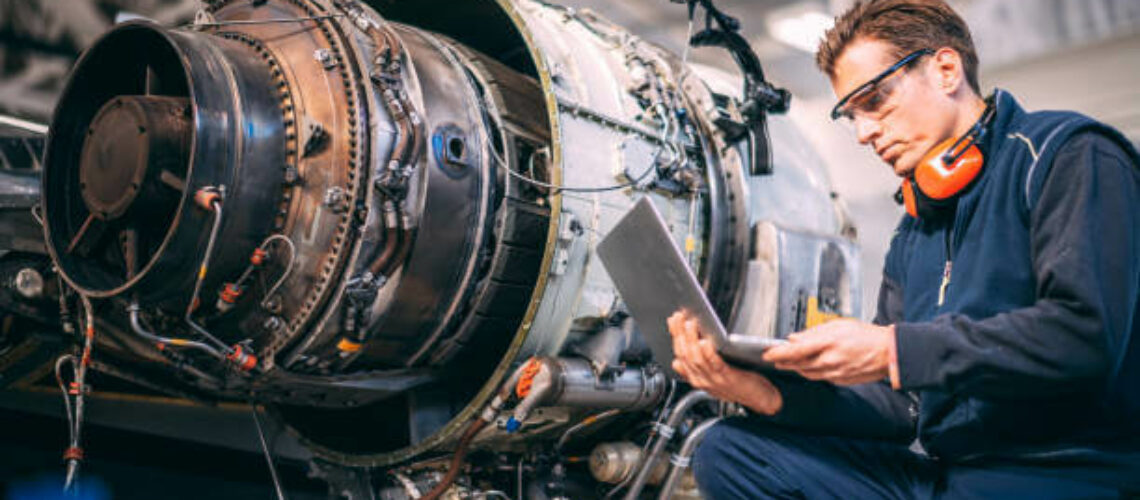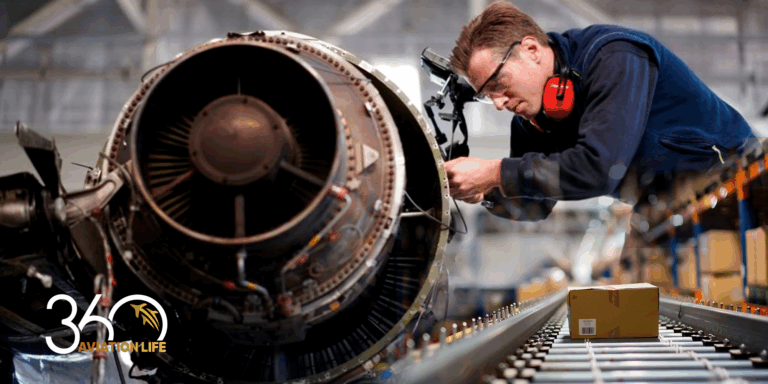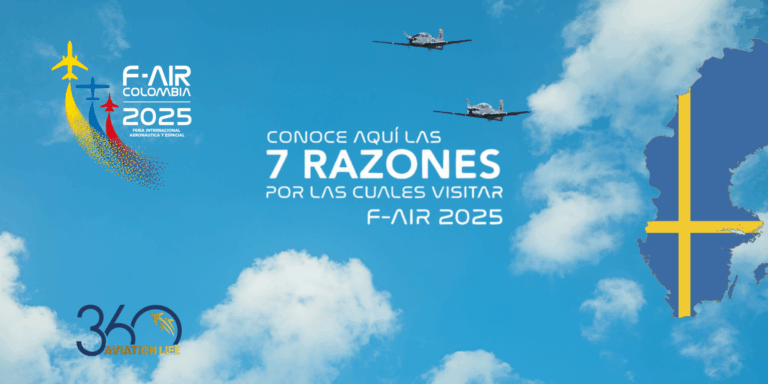Generally, when we talk about the world of aviation, the first jobs that come to mind are pilots, air traffic controllers or flight attendants. These are some of the professions within the world of aeronautics that stand out in front of the cameras, but what about those behind them?
There is an essential figure for all aircraft to take off and land safely: the aircraft mechanic. Although not piloting in the cockpit, they are an essential element in the world of aviation, as the safety of all passengers and crew of any aircraft depends on them.
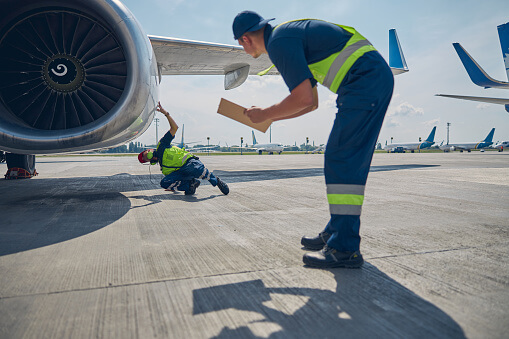
At 360 Aviation Life, we will soon be offering an Airbus A320 CEO & NEO maintenance course. So today we will learn a little about these characters who are constantly working behind the scenes in the world of aeronautics.
If you are interested in obtaining your Aircraft Maintenance License and becoming an aircraft mechanic, this is your opportunity! Be among the first to sign up and get a %10 discount!
What is an aircraft mechanic?
Let’s start with the basics and see what an aircraft mechanic is and does. As its name indicates, this is the person in charge of performing aeronautical maintenance of aircraft engines, structure and systems. In addition, aircraft mechanics are also trained to manufacture and assemble any kind of aircraft components.
On the other hand, any aircraft mechanic is required to know how to operate any type of plane, being it mechanical, electrical, hydraulic, pneumatic, etcetera.
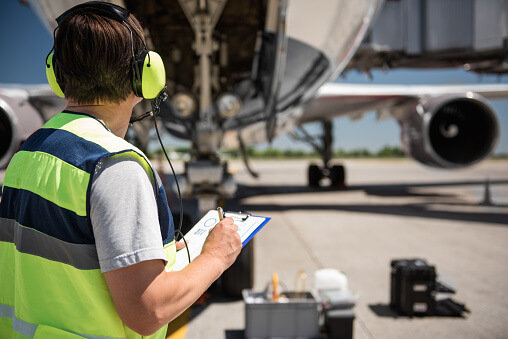
Using various technical documents, such as maintenance manuals, they perform various aeronautical maintenance tasks. They range from the simplest (e.g., changing a light on an airplane wing) to the most complex, such as assembling and disassembling an airplane engine.
Moreover, officially his name is not “aircraft mechanic”, but within the world of aviation he is known as Aircraft Maintenance Technician or Aeronautical Maintenance Technician.
What to study to become an aircraft mechanic?
There are two ways to become a professional aircraft mechanic. One of them is through the Advanced Vocational Training Course (AVTC), also as Vocational Training (VT). The other is through an Aircraft Maintenance License (AML), also called Aeronautical Maintenance Licensealso called Aeronautical Maintenance License, which entitles you to work abroad.
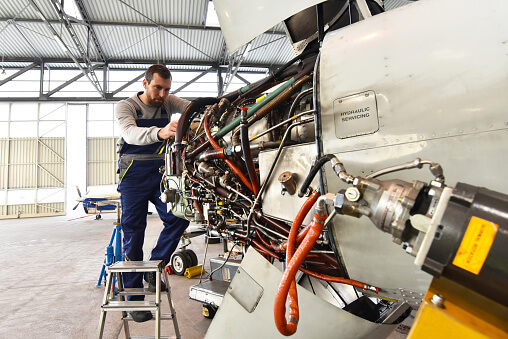
Both options are good for anyone who wants to become an aircraft mechanic, but keep in mind that each type of course, along with its respective license, has its peculiarities and specific qualifications. Let’s see then what AVTC and AML consist of.
Advanced Vocational Training Course (AVTC)
In recent years, Higher Vocational Training (AVTC) has gained importance due to the needs of companies to have professionals trained in practical skills for the labor market.
The AVTC offers a balance between theory and practice, making it an excellent choice for those interested in the aeronautical sector.
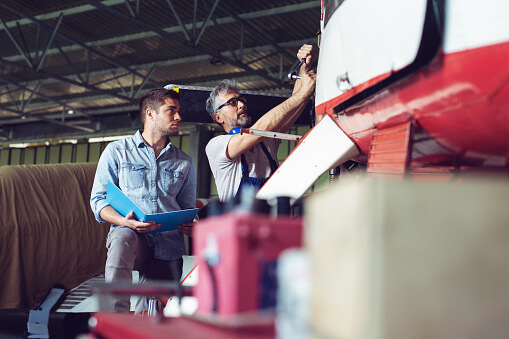
To access a AVTC, it is necessary to have a baccalaureate, an intermediate vocational training or to take the entrance exams for AVTC.
In addition, there are three modes of study in the Vocational Training courses:
- Advanced technician in aeromechanical maintenance of turbine-powered aircraft, where mechanics learn to perform aeronautical maintenance on jet-powered aircraft.
- Superior Technician in aeromechanical maintenance of piston engine aircraft, where mechanics acquire the necessary knowledge to be able to perform maintenance on piston engine powered aircraft.
- Higher Technician in maintenance of electronic and avionic systems in aircrafts, a modality that is common to airplane and helicopter mechanics and in which knowledge is acquired to be able to perform avionic maintenance.
Although each of these modalities has its specific subjects, there are some that are common to all three study modalities, which are:
- Basic aerodynamics
- Business and entrepreneurship
- Human factors
- On-the-job training
- Fundamentals of electricity
- Aeronautical legislation.
Note that every aircraft mechanic must take these subjects in an AVTC, whatever specific study mode he/she chooses afterwards.
The Aircraft Maintenance License (AML)
This type of license will enable you to perform maintenance and repair tasks on an aircraft, but it is important to keep in mind that the scope of such tasks will depend on the type of AML you are granted.
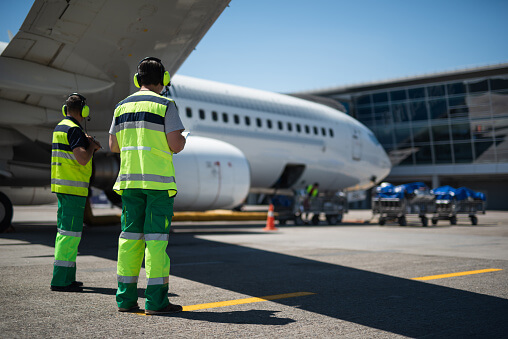
On the other hand, the Aircraft Maintenance License (AML) or Aeronautical Maintenance License is a type of aeronautical training in accordance with the requirements established by the European Aviation Safety Agency (EASA) for the training of aircraft mechanics.
We’ll talk about this later, but let’s start first by examining the ways in which you can get your AML.
How to obtain an aircraft mechanic’s AML
There are two ways to obtain an AML:
- Through an aeronautical training center approved by EASA (part 147 regulations).
- To study at a public or private institute to obtain the AVTC as an aircraft mechanic, and then sit for the exams of the modules of the AML category you wish to obtain.
The difference between the two ways of obtaining an AML is the years of experience that must be accumulated before you can apply. In an EASA Part-145 approved aeronautical maintenance center, you will need fewer years of accumulated experience if you completed your aeronautical training in an EASA Part-147 approved center.
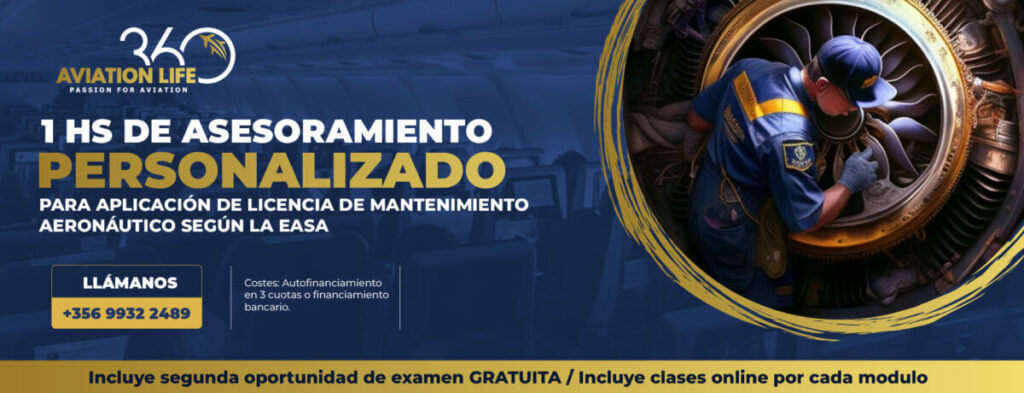
Aircraft mechanic AML categories
As anticipated, the categories or types of AMLs define the scope of work that an aircraft mechanic can perform. This is in accordance with Annex III of EU regulation 2018/1142 (EASA part 66).
There are many types of aircraft mechanic licenses with their respective subcategories with their respective subcategories, which vary depending on the type of engine and maintenance performed. However, here are the most common ones.
Category A
This type of maintenance license allows the aircraft mechanic to issue certificates of release to service (CRS) after performing minor aeronautical maintenance tasks. It has two subcategories:
- A1 (Aircraft with turbine engine).
- A2 (Aircraft with piston engine).
Category B1
This is a type of AML that allows the aircraft mechanic to issue CPS after performing aeronautical maintenance work on the aircraft structure, powerplant, mechanical and electrical systems of the aircraft. Its subcategories are:
- B1.1: Turbine-engine airplanes
- B1.2: Aircraft with piston engine.
Please note that when applying for category B1.1 AML, category A1 AML is additionally granted, and the same is true for category B1.2, which is additionally granted category A2.
Category B2
This category allows the aircraft mechanic to issue CRS when performing aeronautical maintenance work on aircraft electrical and electronic systems, known as aircraft avionics.
In addition, you will be able to perform electrical and avionics tasks on engines and mechanical systems for simple checks, along with secondary flight line work and low complexity defect rectifications.
Contrary to the B1 license type,a B2 category AML does not grant any subcategory of A-type AMLs.
Category B2L
This type of license is applied to engines of low complexity, such as single-engine turboprop and turbojet engines.
This license allows the aircraft mechanic to issue CRS and work as avionics support (the electrical and electronic systems of the aircraft). However, once you have the airframe system rating, you will also be able to perform simple electrical and avionics tasks on engines and mechanical systems.
In turn, this type of license is subdivided into:
- Communication and navigation
- Instrumentation
- Autopilot
- Surveillance
- Cell systems.
Where can I get my AML
Very soon, 360 Aviation Life will be offering a training course for training course for A320 aircraft mechanic in its CEO and NEO version.
It will be taught in online mode, which will allow you to study from anywhere and adapt the pace of learning to your needs. In addition, you will have the opportunity to do your internship and exams in Barcelona, giving you a practical and enriching experience.
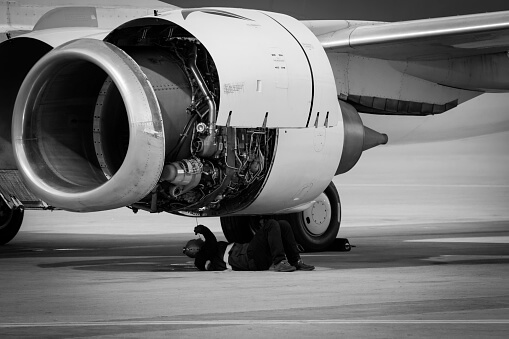
The duration of the course is 50 days and it is taught in English. Upon completion, you will obtain a B1.1 and B2 Aeronautical Maintenance License (AML), which will open new job opportunities in the aeronautical sector.
If you want to enter the wonderful world of aviation and become an expert in aeronautical maintenance, we are waiting for you here at 360 Aviation Life. Be among the first to sign up and get a %5 discount!
Sources
European Aviation Safety Agency (EASA)

